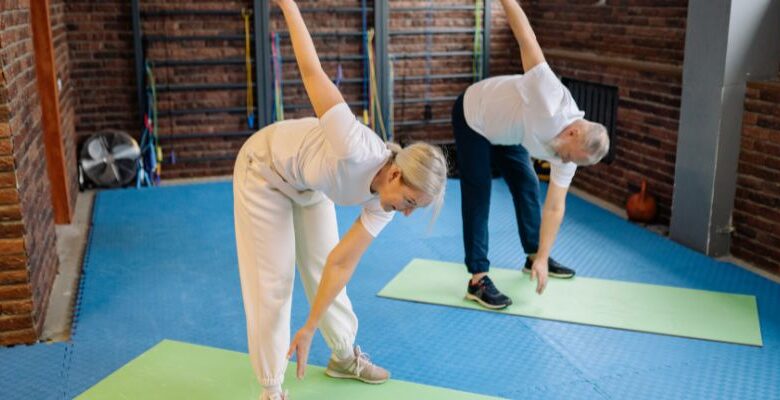
Are you looking to improve your physical health but don’t have the time or resources to visit a gym? Fortunately, you can achieve your fitness goals without leaving the comfort of your home. In this article, we will explore a variety of simple exercises that you can do at home to enhance your physical well-being. Whether you are a beginner or have some experience, these exercises will help you stay fit and active.
Introduction
Maintaining good physical health is essential for a well-rounded and fulfilling life. Regular exercise not only strengthens your body but also boosts your mental well-being. Engaging in physical activities has numerous benefits, including increased energy levels, improved cardiovascular health, enhanced flexibility, and reduced risk of chronic diseases.
Importance of Physical Health
Physical health plays a pivotal role in our overall well-being. By incorporating regular exercise into our routine, we can improve our strength, endurance, and flexibility. Exercise also aids in weight management, promotes better sleep, and increases self-confidence. Moreover, it reduces the risk of developing health conditions such as heart disease, diabetes, and obesity.
Benefits of Exercising at Home
Exercising at home offers several advantages. Firstly, it provides convenience and flexibility, allowing you to work out whenever it suits your schedule. You don’t have to worry about commuting or waiting for equipment at the gym. Secondly, it eliminates any self-consciousness or judgment that one might feel in a public fitness setting. Lastly, exercising at home can be cost-effective, as it eliminates the need for a gym membership.
Setting Up Your Home Exercise Space
Before you begin your home workout routine, it’s important to create a suitable exercise space. Find an area in your home with enough room to move around comfortably. Clear any clutter or obstacles that could hinder your movements. Invest in basic equipment like exercise mats, resistance bands, and dumbbells to add variety to your workouts.
Warm-up Exercises
Warming up before any physical activity is crucial to prepare your body for the workout ahead. Start with a few minutes of light cardio, such as jogging in place or jumping jacks, to increase your heart rate. Follow this with dynamic stretches that target major muscle groups, such as arm circles, leg swings, and trunk rotations.
Cardiovascular Exercises
Cardiovascular exercises get your heart pumping and improve your overall endurance. You can engage in activities like brisk walking or jogging on the spot, dancing to your favorite music, jumping rope, or climbing stairs. Aim for at least 30 minutes of moderate-intensity cardio exercises, five days a week, to maximize the benefits.
Strength Training Exercises
Strength training exercises are crucial for building muscle strength and increasing bone density. Utilize your body weight or incorporate resistance bands and dumbbells to challenge your muscles. Exercises like push-ups, squats, lunges, and planks can be performed at home without any equipment. Start with lighter weights or modifications if you’re a beginner and gradually increase the intensity as you progress. Aim for two to three sessions of strength training exercises per week, targeting different muscle groups each time.
Flexibility and Stretching Exercises
Flexibility and stretching exercises help improve your range of motion and prevent muscle stiffness. Incorporate exercises like yoga or Pilates into your routine to enhance flexibility and promote relaxation. Remember to perform static stretches after your workout to cool down your muscles and reduce the risk of injury.
Balance and Coordination Exercises
Maintaining good balance and coordination is important for overall stability and reducing the risk of falls, especially as we age. Simple exercises such as standing on one leg, heel-to-toe walk, or using a balance board can help improve balance and coordination. These exercises challenge your body to stabilize and engage different muscle groups.
Incorporating Bodyweight Exercises
Without the use of equipment, bodyweight workouts are a great approach to increasing muscle strength and endurance. Exercises such as squats, lunges, push-ups, and planks utilize your body weight to provide resistance. They can be easily modified to suit your fitness level, making them suitable for beginners and advanced individuals alike.
Interval Training
With interval training, you alternate between short rest breaks and workouts that require a lot of energy. This type of workout boosts your metabolism, improves cardiovascular fitness, and burns calories effectively. Incorporate exercises like high knees, burpees, mountain climbers, and jumping jacks into your interval training routine. Remember to maintain proper form and listen to your body’s cues.
Monitoring Progress and Staying Motivated
To stay motivated and track your progress, consider keeping a workout journal or using fitness apps. Set attainable objectives and recognize your progress along the way. Stay consistent with your workouts, and if you find yourself losing motivation, try switching up your exercises, finding a workout buddy, or joining virtual fitness communities for support and accountability.
Precautions and Safety Guidelines
When engaging in home exercises, it’s important to prioritize safety. Before beginning any new workout regimen, always speak with a medical practitioner, especially if you have any underlying health issues. Start with exercises suitable for your fitness level and gradually progress. Pay attention to your form, listen to your body, and take rest days to allow for proper recovery.
Healthy Lifestyle Habits
Improving your physical health goes beyond exercise. Adopting healthy lifestyle habits such as eating a balanced diet, staying hydrated, getting enough sleep, and managing stress are equally important. Incorporate nutritious foods, avoid excessively processed foods, and prioritize self-care activities to support your overall well-being.
Conclusion
Improving your physical health doesn’t have to be complicated or require expensive gym memberships. With these simple exercises that you can do at home, you have the power to enhance your fitness level, increase your energy, and improve your overall well-being. Start small, be consistent, and enjoy the journey of taking care of your physical health.




